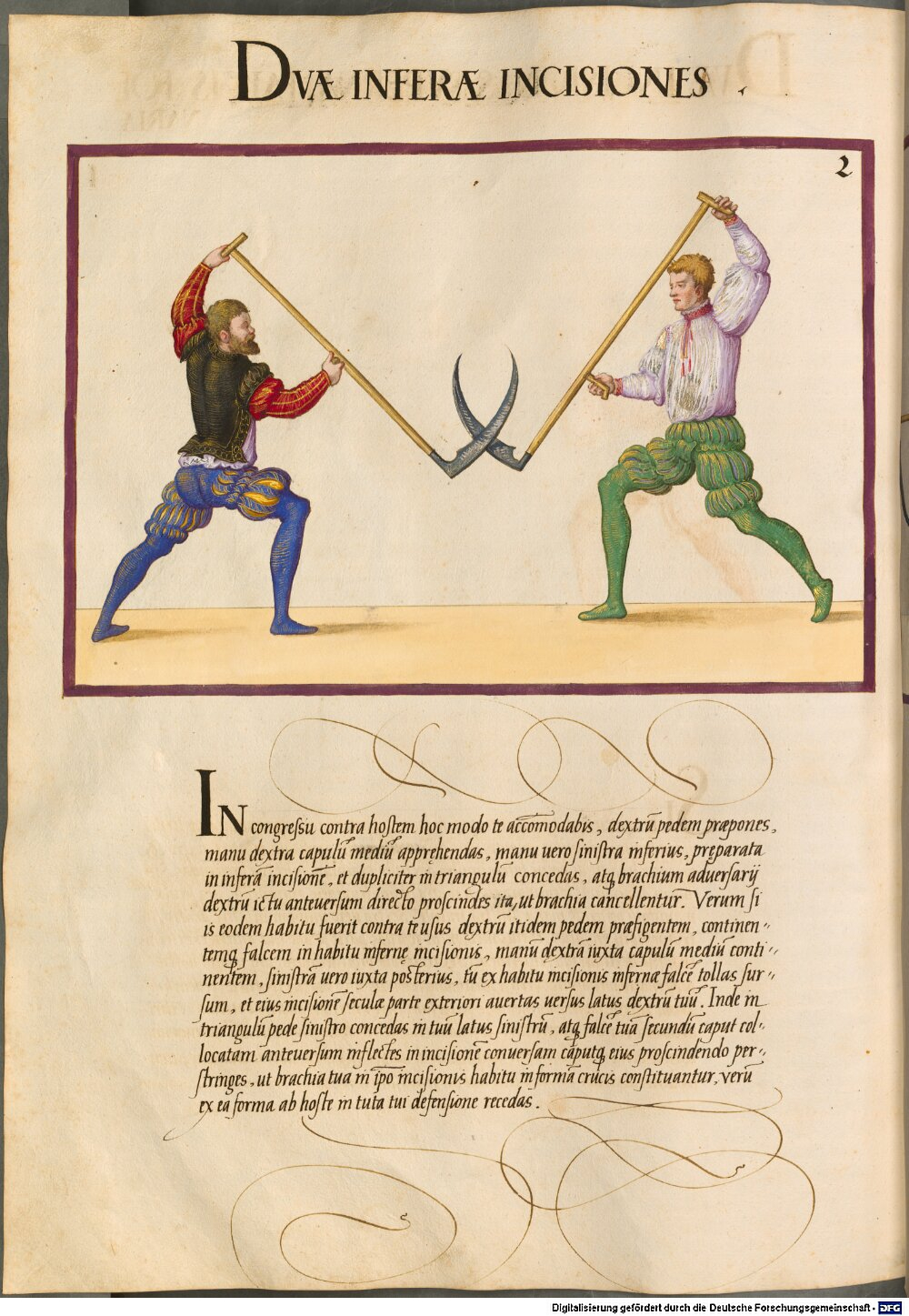 |
| http://daten.digitale-sammlungen.de/~db/bsb00006570/images/bsb00006570_00411.jpg |
In contrast with the use of war scythes (having a straight tang mounted on a pole), a 16th-century book on European martial arts shows the typical two-grip scythes being used as weapons.
Paulus Hector Mair (1517-1579) compiled an encyclopedic martial arts compendium showing techniques for a wide variety of weapons, including some tools a farmer might have on hand (scythes, sickles, flails). The scythe-related pages are linked here, thanks to the Bavarian State Library in Munich.
 |
| http://daten.digitale-sammlungen.de/~db/bsb00006570/images/bsb00006570_00412.jpg |
 |
| http://daten.digitale-sammlungen.de/~db/bsb00006570/images/bsb00006570_00413.jpg |
 |
| http://daten.digitale-sammlungen.de/~db/bsb00006570/images/bsb00006570_00414.jpg |
 |
| http://daten.digitale-sammlungen.de/~db/bsb00006570/images/bsb00006570_00415.jpg |
 |
| http://daten.digitale-sammlungen.de/~db/bsb00006570/images/bsb00006570_00416.jpg |
 |
| http://daten.digitale-sammlungen.de/~db/bsb00006570/images/bsb00006570_00417.jpg |
 |
| http://daten.digitale-sammlungen.de/~db/bsb00006570/images/bsb00006570_00418.jpg |
 |
| http://daten.digitale-sammlungen.de/~db/bsb00006570/images/bsb00006570_00419.jpg |
 |
| http://daten.digitale-sammlungen.de/~db/bsb00006570/images/bsb00006570_00420.jpg |
Modern enthusiasts have translated the text and experimented with these techniques, as seen in this video:
A more realistic demonstration is shown in this video:
Some modern mowing styles are described as resembling "tai chi" motions. This next video clip (from the Living Lightly film) goes beyond tai chi, with a kung fu "form" utilizing a scythe.
 |
| Click here to watch video clip. |
Sources:
Mair, Paul Hector: De arte athletica I - BSB Cod.icon. 393(1, Augsburg, Mitte 16. Jh. [BSB-Hss Cod.icon. 393(1], Images © Bayerische Staatsbibliothek
http://wiktenauer.com/wiki/Opus_Amplissimum_de_Arte_Athletica_%28Cod.icon._393%29
Video: Scythe Experiment
Video: Demonstration Sense
Video: Living Lightly 2007 Part 4 (starting at 2:12)
Photo from Living Lightly soundtrack at soundcloud.com





.jpg)










